People
Director, Professor André van Schaik
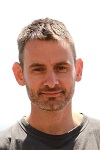
André van Schaik is a Research Professor in Bioelectronics and Neuroscience. He received the M.Sc. degree in electrical engineering from the University of Twente, Enschede, The Netherlands, in 1990 and the Ph.D. degree in electrical engineering from the Swiss Federal Institute of Technology (EPFL), Lausanne, Switzerland, in 1998. In 1998 he was a postdoctoral research fellow in the Department of Physiology at the University of Sydney, funded by fellowship from the Garnett Passe and Rodney Williams memorial foundation. In 1999 he became a Senior Lecturer in the School of Electrical and Information Engineering at the University of Sydney and promoted to Reader in 2004. In 2011 André became a professor at Western Sydney University and started the Biomedical Engineering and Neuromorphic Systems Research Program in the MARCS Institute for Brain, Behaviour, and Development.
His research focuses on three main areas: neuromorphic engineering, bioelectronics, and neuroscience. He was identified as a world leader in neuromorphic engineering research in May 2006 by an independent article in IEEE Spectrum, the IEEE largest circulation magazine. He has authored more than 200 publications and is an inventor of more than 35 patents. He is a founder of three start-up companies: VAST Audio, Personal Audio, and Heard Systems. He is a Fellow of the IEEE.
Research staff
Dr Tara Julia Hamilton
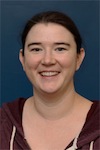
Tara Julia Hamilton is an Associate Professor in Neuromorphic Engineering. She completed a BE (Electrical) Hons I and BCom (Economics and Marketing) in 2000 from the University of Sydney. During this time Tara was an Energy Australia Scholar. In 2000 Tara began working at Cochlear Ltd. first as a Quality Engineer and then as an Integrated Circuit (IC) Design Engineer, while at the same time completing a MEngSc (Biomedical) from the University of New South Wales. In 2004 Tara began a PhD at the University of Sydney. During this time Tara lectured Digital Integrated Circuit Design and Electronics. Tara also worked as a consultant for a number of companies including: Cochlear Ltd., Surgical Diagnostics Pty. Ltd., G2 microsystems and Perceptia Design Services. Tara was awarded a PhD from the University of Sydney in 2008. In 2008 Tara started at the University of Queensland as a lecturer in Electronics. Also in 2008 Tara was awarded an Australian Research Council (ARC) Australian Postdoctoral Fellowship (APD) and an ARC discovery grant for 4 years commencing in 2009. This grant funded research into neuromorphic binaural sensors aimed at solving the "cocktail party problem" in both artificial systems and hearing aid devices. In 2010 Tara started at the University of NSW as a lecturer in digital systems design. She joined the Biomedical Engineering and Neuromorphic Systems program in the MARCS Institute for Brain, Behaviour and Development at Western Sydney University in 2012.
Tara's research activities include low power analogue and digital IC design, neuromorphic engineering (modelling neurons and neural systems), biomedical engineering (medical devices), auditory signal processing and electronics.
Dr Paul Breen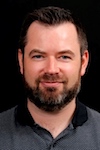
Paul Breen is an Associate Professor in Biomedical Engineering with the Biomedical Engineering and Neuromorphic Systems program in the MARCS Institute for Brain, Behaviour, and Development at Western Sydney University. He received his B.Eng. Degree in Computer Engineering (First Class Honours) in 2003 and his Ph.D. Degree in 2007, both from the University of Limerick. He has worked in at Roessingh Research & Development, Enschede, The Netherlands, Harvard Medical School, Boston, USA, European Space Agency, Nordwick, The Netherlands and School of Medicine, Western Sydney University.
Dr. Breen's research interests centre around the use of electrical stimulation for healthcare applications with a particular interest in wound care. He is a leading expert in the design and use of neuromuscular electrical stimulation, particularly for improving cardiovascular function. He is also actively investigating the potential of subsensory electrical stimulation as a treatment for the loss of neural functionality where it is impaired through neuropathy.
Dr Gaetano Gargiulo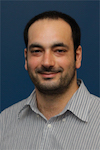
Gaetano D. Gargiulo is a Senior Lecturer in Biomedical Instrumentation and data analysis with the Biomedical Engineering and Neuromorphic Systems program in the MARCS Institute for Brain, Behaviour, and Development at Western Sydney University. He received his 'Laurea Magistalis' (MS equivalent) in electronic engineering (bioelectronics specialisation) from 'Federico II' the University of Naples in 2006 and his PhD in biomedical instrumentation and biomedical data analysis from the University of Bologna in 2010. During his PhD and until Early 2012 Gaetano was working full time for an Australian company (HEARD Systems) researching non-invasive pregnancy detection in large farm animals. During his academic career Gaetano has authored and co-authored more than 40 peer reviewed papers, edited two scholarly books and listed as inventor on ten patents.
Gaetano's research interests are: non-invasive foetal monitoring, Brain Computer Interface (BCI), non-invasive cardio-vascular monitoring, haemodynamics, and bio-inspired systems.
Dr Yossi Buskila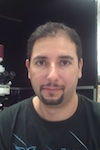
Yossi Buskila is a research lecturer in Neurophysiology with the Biomedical Engineering and Neuromorphic Systems program in the MARCS Institute of Brain, Behaviour, and Development at Western Sydney University. He received his PhD degree in neurophysiology from Ben-Gurion University of the Negev, Beer-Sheva, Israel, in 2010. Following his PhD he joined the lab of Prof. Graham Ellis-Davies in the Department of Physiology at Drexel University College of Medicine as a postdoctoral research fellow, where he studied the effect of Beta-amyloid on cortical pyramidal neurons using electrophysiological and 2-photon imaging techniques.
Yossi's research focuses on signal processing in cortical networks. Yossi use multi-site electrophysiological recordings in brain slices along with imaging techniques to study the adaptation of spike propagation delays in dendrites and also the neuronal-astrocytic interactions in the somatosensory cortex.
Dr Mark Wang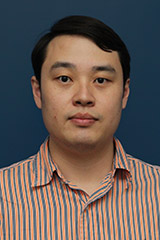
Runchun Mark Wang is a research lecturer in Neuromorphic Engineering with the Biomedical Engineering and Neuromorphic Systems program in the MARCS Institute for Brain, Behaviour, and Development at Western Sydney University. His main project is to design Hardware Acceleration for Neural Systems. As part of this project, Dr Wang will help build an electronic system, which includes both FPGA implementation and mixed/signal analogue VLSI, which is capable of simulating neural networks of a size similar to that of the human brain. Mark will provide open source software, so that other researchers can also use the system. His PhD topic was "Neuromorphic Implementations of Polychronous Spiking Neural Networks". The work includes the design of a polychronous spiking neural network using a novel delay-adaptation algorithm, an FPGA implementation of the proposed neural network, an analogue implementation of the proposed neural network, and their integration into a mixed-signal platform.
Before Mark started his PhD study, he worked as a SoC/ASIC design engineer in industry.
Dr Farzaneh Ahmadi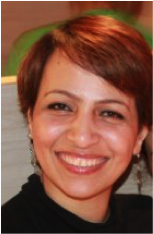
Farzaneh Ahmadi is a postdoctoral research fellow with the Biomedical Engineering and Neuromorphic Systems program in the MARCS Institute for Brain, Behaviour, and Development. Farzaneh is a BSc. graduate of Electronics Engineering from University of Tehran. She started her research career as an industrial R&D project manager in Iran where she was nationally acknowledged for successful delivery of multiple pilot R&D projects. In 2007 she returned to academia to work as a Research Associate at the Nanyang Technological University (NTU) of Singapore and started her PhD in Biomedical Engineering developing a Bionic Voice prosthesis for patients who lose their voice box due to larynx cancer.
In 2013, Farzaneh managed to establish Bionic Voice research for the first time in Australia with the invaluable support of the Garnett Passe and Rodney Williams Memorial Foundation at the university of Sydney. In December 2014, she seized the opportunity of positioning the Bionic Voice research in a prominent research group in neural engineering and Bionics in Australia: BENS group at MARCS. For this, she has been awarded a prestigious four-year Research Fellowship by the Garnett Passe and Rodney Williams Memorial Foundation to continue developing Bionic Voice in BENS. The Bionic Voice research of her fellowship is supported by official collaboration between MARCS and the University College of London (UCL).
Farzaneh's research aims to develop the first functional Bionic Voice prosthesis which will substitute the existing clinical gold standard. Her research builds on the state of the art in bionic limb design, starting from analysis of muscle activities after loss of larynx and proceeding systematically to interface the remaining laryngeal nerves through transferring nerves of the missing larynx to muscles in the neck to control the prosthesis. This positions the research as a highly significant, cutting edge, yet feasible step toward solving major problems at the interface of bio-signal processing and otolaryngology (including taking control of a non functional larynx).
Dr Gregory Cohen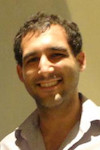
Gregory Cohen is a postdoctoral research fellow in Neuromorphic Engineering with the Biomedical Engineering and Neuromorphic Systems program in the MARCS Institute for Brain, Behaviour, and Development at Western Sydney University. He received a BSc(Eng) Electrical and Computer engineering, a MSc (Eng) and a BCom(Hons) in Finance and Portfolio Management from the University of Cape Town, Cape Town, South Africa in 2007, 2008, 2010 respectively and a joint PhD from the Western Sydney University, Sydney Australia and the University of Pierre and Marie Curie in Paris, France.
He worked as a consulting engineer in the field of large-scale HVAC from 2007 to 2009, as a design engineer for an online diagnostics and monitoring company from 2009 to 2011, and as an expert consultant for Kaiser Economic Development Practice in 2012.
His interests include event-based vision sensors and algorithms, machine learning, spiking neural networks and biomedical signal analysis.
Dr Ganesh Naik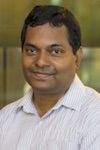
Ganesh R. Naik is a postdoctoral research fellow with the Biomedical Engineering and Neuromorphic Systems group in the MARCS Institute for Brain, Behaviour, and Development. He received a B.E. degree in Electronics and Communication Engineering from the University of Mysore, India, in 1997, an M.E. degree in Communication and Information Engineering from Griffith University, Brisbane, Australia, in 2002, and a PhD degree in Electronics Engineering, specialising in biomedical engineering and signal processing from RMIT University, Melbourne, Australia, in December 2009.
He held a Chancellor's Post-Doctoral Research Fellowship position in the Centre for Health Technologies, University of Technology Sydney (UTS) between February – 2013 to June – 2017. As an early mid-career researcher, he has edited 11 books, authored more than 100 papers in peer reviewed journals and conferences. Ganesh serves as an associate editor for IEEE ACCESS, Frontiers in Neurorobotics and two Springer journals (Circuits, Systems, and Signal Processingand Australasian Physical & Engineering Sciences in Medicine). He is a recipient of the Baden–Württemberg Scholarship from the University of Berufsakademie, Stuttgart, Germany (2006–2007). In 2010, he was awarded an ISSI overseas fellowship from Skilled Institute Victoria, Australia.
His research interests include Biomedical signal processing (ECG, EEG and EMG), Blind source separation techniques, Brain computer interface (BCI), Pattern recognition, machine learning and prosthetics. He is a senior member of the IEEE.
Dr Andrew Nicholson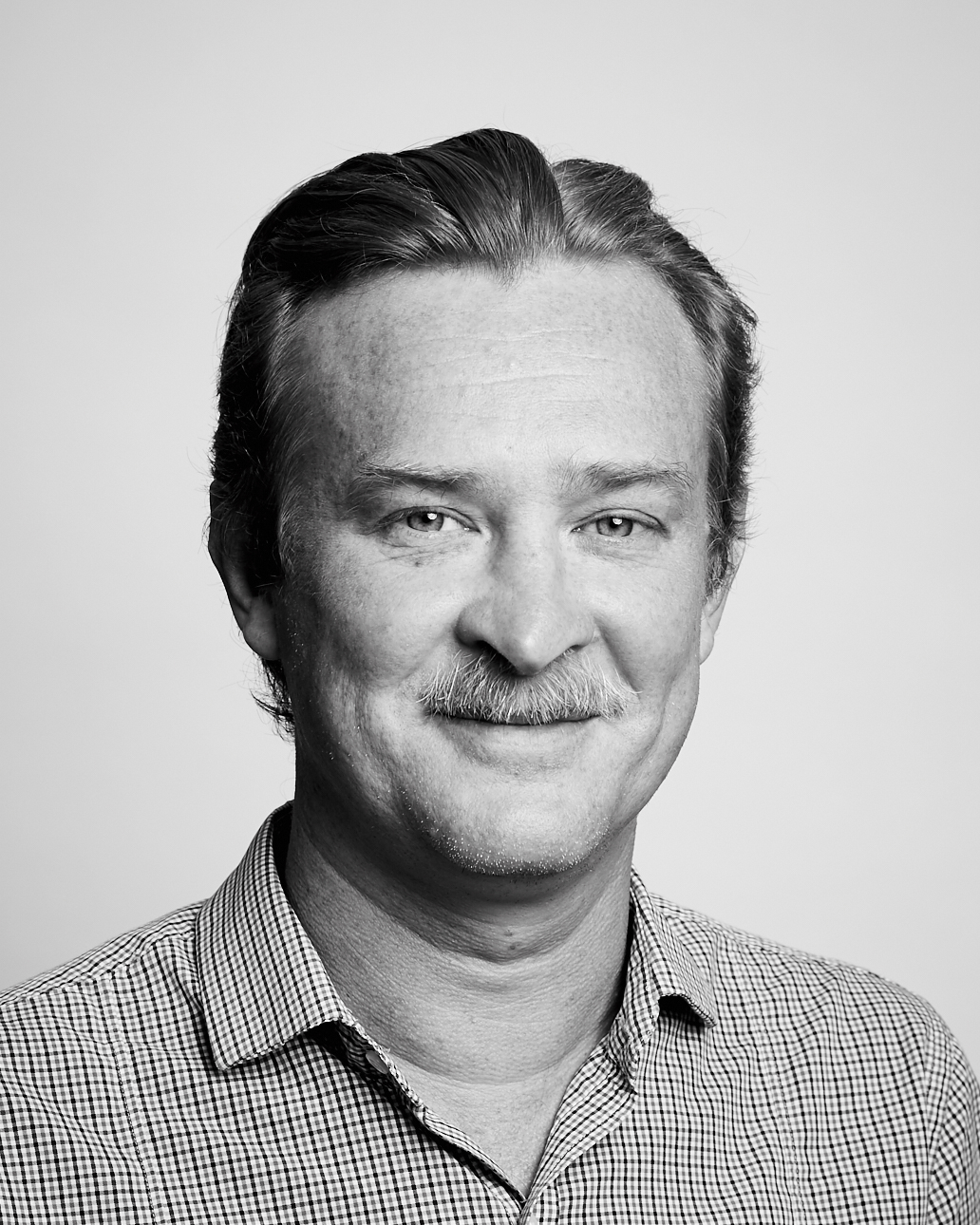
Andrew Nicholson is a postdoctoral research fellow in Neuromorphic Engineering with the Biomedical Engineering and Neuromorphic Systems program in the MARCS Institute for Brain, Behaviour, and Development at Western Sydney University. He received the B.Eng. (Hons 1) in Computer Engineering from the University of Newcastle in 1997. After more than thirteen years in industry and community sectors working as a software engineer Nicholson returned to academia in 2010. He received the M.Eng. (Wireless) from University of Sydney and the Ph.D. degree from the University of New South Wales in the school of Electrical Engineering and Telecommunications in 2017.
His research interests include digitally-assisted analog electronics, stochastic electronics, and green, low-power electronics.
Dr Travis Monk
Travis Monk is a postdoctoral researcher with the Biomedical Engineering and Neuromorphic Systems program in the MARCS Institute for Brain, Behaviour, and Development at Western Sydney University. He received a BSc in Physics from Truman State University, USA, an MSc in Theoretical Neuroscience from the University of Plymouth, UK, and a PhD in Zoology from the University of Otago, New Zealand. He was a postdoctoral researcher in Machine Learning in the Hearing4all Cluster of Excellence at the University of Oldenburg, Germany on funding from the DFG.
His research interests are understanding the fundamental principles of neural computation. He blends knowledge from the life sciences (the early evolutionary history of the animal kingdom) and quantitative sciences (physics, statistics, and computer programming) to understand how networks of spiking cells represent the world and make decisions. He is also interested in quantitative models of evolutionary processes (evolutionary graph theory) and biologically-inspired unsupervised learning algorithms.
Associate members
Professor John Morley
John Morley is the Foundation Chair in Anatomy & Cell Biology in the School of Medicine at Western Sydney University.
His research has been mainly in the area of sensory neuroscience, in which he has investigated issues of neural coding in the somatosensory, visuomotor, and visual systems. He has substantial experience with in vivo electrophysiological recording, including multichannel data acquisition, and in vitro sharp electrode and patch clamp recording. Most recently research in his laboratory has investigated the development of cortical and retinal visual neuroprostheses, functional plasticity in the cerebral cortex following disruption of sensory input, and the role of the protein dystrophin in CNS neurones (the protein that is absent in the condition Duchenne muscular dystrophy). His research has attracted substantial funding support, and he was a chief investigator (with Professor Vaughan Macefield) on an ARC/NHMRC Thinking Systems program grant, and is a chief investigator on the recently awarded $42 million grant from the Federal Government to Bionic Vision Australia to develop a retinal prosthesis.
Dr David Mahns
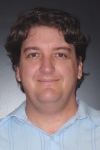
David Mahns is a Senior Lecturer in Integrative Physiology at the School of Medicine at Western Sydney University. After completing his doctoral work in Cardiovascular Physiology (1999) David undertook post-doctoral work in sensory physiology under the direction of Professor Mark Rowe as a NHMRC research officer. In 2003 he was appointed as Lecturer and Course coordinator (2003-2006). In 2007 David was appointed as a senior lecturer in Integrative Physiology at Western Sydney University.
David specialises in quantifying the contribution of sensory nerves arising from skin and deep structures such as muscle and bone to perception. Recent work has focused on defining how we distinguish between non-painful (e.g. innocuous touch) and painful stimuli. These questions are addressed using psychophysical observations and detailed electrophysiological recordings. In collaboration with Professor Macefield he is examining the contribution of different sensory nerves to the abnormal condition of allodynia where gentle touch is perceived as painful.
Dr Antonio Lauto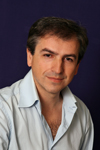
Antonio Lauto is a Senior Lecturer in Biomedical Nanotechnology in the School of Biomedical and Health Sciences at Western Sydney University. He received his PhD in Biomedical Engineering at the University of New South Wales (Sydney, Australia). He worked for several years as a Research Fellow, at Cornell University and The Memorial Sloan Kettering Cancer Center, in New York (USA).
Antonio's multidisciplinary research spans the fields of tissue engineering and biomaterials to medical applications of laser technology and nanophotonics. He has a recognised track record in the development, characterisation and applications of novel laser-activated bioadhesives for nerve and tissue repair.
Past members
Dr Chetan Singh Thakur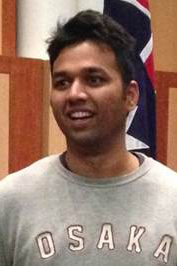
» Email: csthakur@iisc.ac.in
» Web: neuronics.dese.iisc.ac.in
Chetan Singh Thakur joined the Indian Institute of Science, Bangalore as an Assistant Professor in May 2017. He received his PhD in neuromorphic engineering under the supervision of Prof. André van Schaik and Prof Jon Tapson at the MARCS Research Institute (Brain, Behaviour and Development), Western Sydney University in March 2016. He then worked as a research fellow at the Johns Hopkins University, USA with Prof. Ralph Etienne-Cummings. In addition, Dr. Thakur has extensive industrial experience. After completing his MTech from the Indian Institute of Technology, Bombay in 2007, he worked for 6 years with Texas Instruments Singapore as a senior Integrated Circuit Design Engineer, designing IPs for mobile processors. He has worked with several world leaders in the field of neuromorphic engineering, and his research expertise lies in brain-inspired computing, mixed signal VLSI systems, computational neuroscience and machine learning. His research interest is to understand the signal processing aspects of the brain and apply those to build novel intelligent systems. He is a recipient of the Inspire Faculty Award 2016 by the Department of Science and Technology, India. He also received the Young Investigator Award by Pratiksha Trust in Aug 2017 for his work in the field of brain-inspired computing.
Dr Patrick Kasi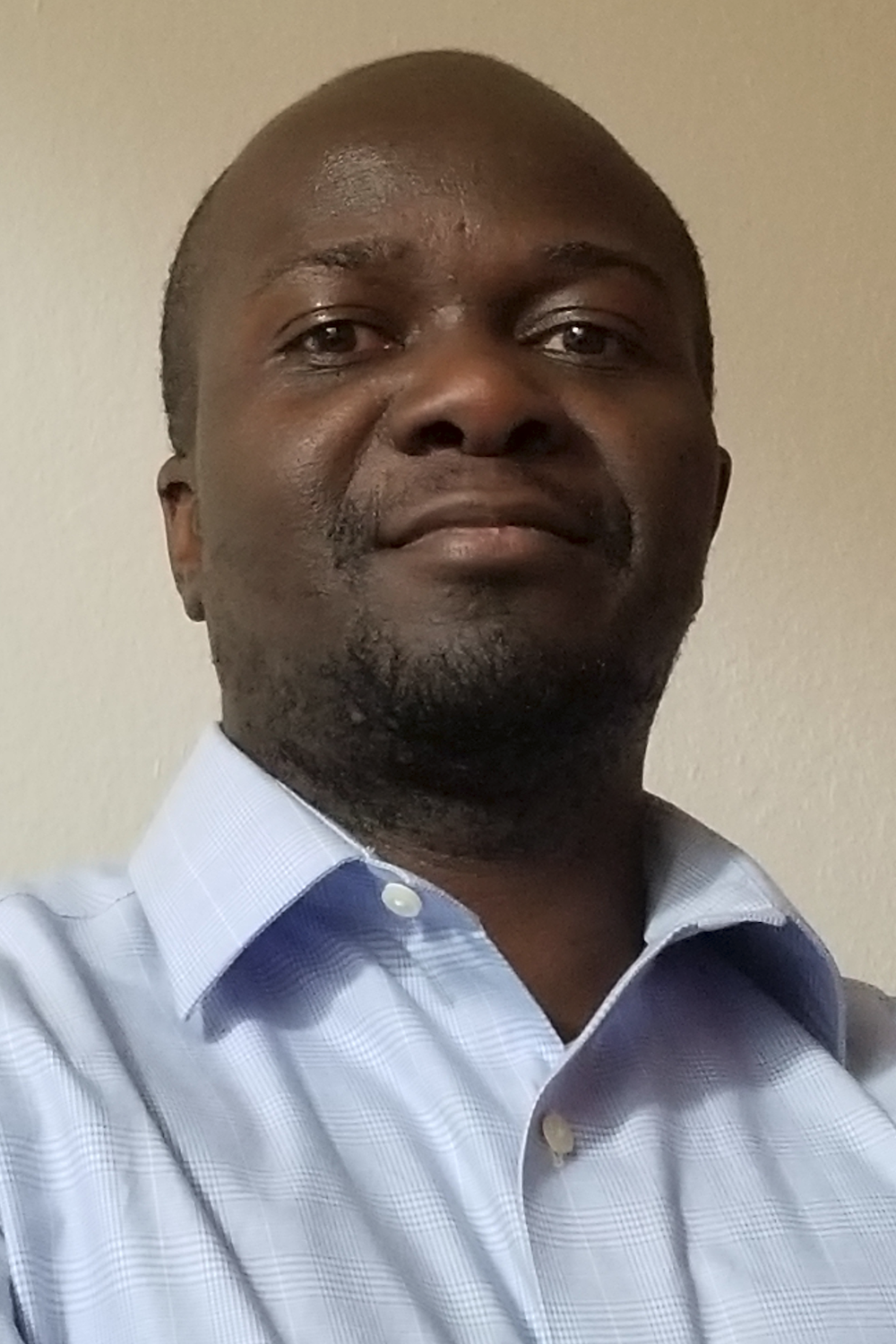
» Email: patrick.kasi@abbott.com
Patrick Kasi was PhD research student under professor van Schaik and Dr. Birznieks, at the MARCS Institute for Brain, Behaviour, and Development at Western Sydney University. He received the M.Sc. degree in electrical and computer engineering from Worcester Polytechnic Institute, in 2009 USA, and a PhD in biomedical engineering and neuroscience (Bayesian Decoding of Tactile Afferents Responsible for Sensorimotor Control) in 2017. Prior to his doctoral studies, Patrick worked as a research engineer (2007-2012), at Harvard medical school, where he investigated mechanisms underlying muscle atrophy in patients with amyotrophic lateral sclerosis, bio-mechanics of both lower and upper limbs in children with cerebral palsy and individuals with stroke, as well as investigating the effects of robotic therapy in patients with stroke.
Patrick is currently a Research Engineer with the Applied Research and Technology group, Cardiac Arrhythmia and Heart Failure, Abbott Laboratories in St-Paul Minnesota, USA. Patrick's research focuses on understanding underlying drivers of tachycardias such as atrial fibrillation, advancing cardiac mapping systems for diagnosis and treatment of tachycardia, and assessing the efficacy of ablation techniques.
Dr Sarah McIntyre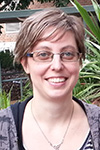
» Email: sarah.mcintyre@liu.se
» Web: https://liu.se/en/employee/sarmc72
Sarah McIntyre was a postdoctoral research fellow in sensory neuroscience at the MARCS Institute for Brain, Behaviour, and Development at Western Sydney University. She received her PhD on perceptual processing of tactile motion from the University of Sydney in 2014. Following her PhD, Sarah worked at Neuroscience Research Australia investigating information encoding by temporal structure of tactile afferent spike trains evoked by complex vibrotactile stimuli. With her move to Western Sydney University, she continued in this role part-time. In 2017 she moved to Sweden to start a postdoctoral research fellowship at Linköping University.
Sarah's research focuses on human perception of touch and vibration, and the neurophysiological systems that produce sensation. Sarah primarily uses psychophysical techniques to measure perceptual thresholds and sensory discrimination. She is currently investigating the use of subsensory electrical stimulation to improve sensation in the presence of neuropathy.
Professor Vaughan Macefield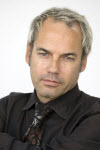
Vaughan Macefield was Foundation Chair of Integrative Physiology at the School of Medicine, University of Western Sydney, and a Conjoint Principal Research Fellow at Neuroscience Research Australia until 2016. A former NMHRC Senior Research Fellow, he completed his PhD at UNSW in 1986, then undertook advanced training in human neurophysiology in Sweden and the USA. In 1994 he established his own laboratories at POWMRI, prior to joining Western Sydney University in 2006. In 2016 Vaughan moved to Dubai to become Professor and Chair of Physiology at Mohammed Bin Rashid University of Medicine & Health Sciences. In 2018, he moved to the Baker Heart & Diabetes Institute in Melbourne, as Head of the Human Autonomic Neurophysiology Lab.
Vaughan specializes in recording from single nerve fibres via tungsten microelectrodes inserted into the peripheral nerves of awake human subjects, and is known internationally as a world expert in recording the firing properties of human sympathetic neurones in health and disease, and as a leading investigator in human sensorimotor control. He has active collaborations with many groups in Australia, Sweden and the USA, and has attracted postdoctoral scientists from Sweden, Denmark, Canada and Australia.
Dr Ingvars Birznieks
» Email: i.birznieks@neura.edu.au
» Web: https://www.neura.edu.au/staff/dr-ingvars-birznieks/
Ingvars Birznieks was a Senior Lecturer in Physiology at the School of Biomedical and Health Sciences, Western Sydney University. He received his PhD training in the world's leading laboratories in the field of tactile sensory encoding mechanisms led by Professor R.S. Johansson at the Umea University in Sweden and Professor A.W. Goodwin at the University of Melbourne, two of the world's most prominent experts in this field. He is now with NeuRA in Sydney.
Ingvars' research concentrates on the neural mechanisms and encoding of the perception of touch.
Professor Philip de Chazal
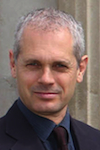
» Email: philip.dechazal@sydney.edu.au
» Web: https://sydney.edu.au/engineering/people/philip.dechazal.php
Philip de Chazal was a research professor in Biomedical Signal Processing and an ARC Future Fellow. He has a B.E. (1988), M.Biomed.E (1995) and Ph.D. (1999) from University of New South Wales. In his last post he was a founder, director and chief technical officer of the Irish company BiancaMed for 9 years. BiancaMed is a world leader in providing non-contact sleep monitoring solutions and was acquired by ResMed Inc. in 2011. Previous to this he was a research fellow at University College Dublin and an experimental scientist with Ultrasonic Institute, CSIRO, Sydney. In 2015 he moved to the University of Sydney to take up the ResMed Chair in Biomedical Engineering.
Philip's research is focused on understanding breathing and sleeping physiology and also on developing automated diagnostic devices for monitoring of sleep and the cardiorespiratory system. In addition, he has extensive experience in transforming university research into commercial reality. He has published over 100 articles including 23 journal publications and 60 conference papers. He is an inventor on 9 patents.
Dr Klaus Stiefel

» Web: http://neurolinx.org/about/adjunct-researchers/klaus-stiefel/
Klaus Stiefel was a Postdoctoral Research Fellow in Computational Neuroscience in the MARCS Institute from 2012-2014. Klaus received his undergraduate degree (Magister rer. nat.) in microbiology at the University of Vienna in in 1998. He did his undergraduate thesis work, on cold-shock in E. coli, at the Institute of Microbiology and Genetics of the University of Vienna. Klaus then did his doctorate work, on synaptic plasticity, with Wolf Singer at the Max Planck Institute for Brain Research in Frankfurt, Germany. His degree, in zoology, was granted by the University of Vienna, with Friedrich Barth as the head of the thesis comity. He then did a post-doc with Terry Sejnowski at his Computational Neurobiology Lab at the Salk Institute, working on dendritic integration and neural oscillations. From 2006 to 2011 Klaus was at the Okinawa Institute of Science and Technology.
Klaus' research interests are the computational capabilities of nervous systems. In single neurons, he is interested in neuronal excitability and dendritic signal integration. In networks, he is especially interested in synchronous oscillations, reverbaratory activity and concepts like liquid state machines. His methods are theoretical and simulation-based. He aims for an approach which is informed by biology and inspired by dynamical systems; realistic without drowning in detail; empirically meaningful but conceptually groundbreaking at the same time.
A serious side-interest of Klaus' is the biology of fishes, especially the marine family gobiidae (gobies). In 2011 he surveyed a marine region in the central Philippines for gobies down to a depth of 60 meters.
Dr Andrew Wabnitz

» Email: Andrew.Wabnitz@dst.defence.gov.au
Andrew Wabnitz was a Research Engineer with the Biomedical Engineering and Neuromorphic Systems group in the MARCS Institute for Brain, Behaviour, and Development. He received his B.E. (Electrical/Electronic) and B.Sc. (Physics) degrees in 2005 from the University of Adelaide, and his Ph.D. degree in 2013 at the School of Electrical and Information Engineering, University of Sydney. Prior to his role at the MARCS Institute, Andrew spent a number of years working as a software and electronics engineer within automotive, biomedical and defence industries.
In 2015 Andrew transitioned to the Defence Science and Technology (DST) Group, part of the Australian Department of Defence, where he is now working as a Research Scientist. His research interests include machine learning, brain-inspired computing and embedded system architectures, with application domains in Space and Cyber Security.
Professor Jonathan Tapson
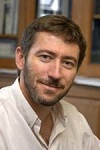
» Email: j.tapson@westernsydney.edu.au
Jonathan Tapson was a Professor in the MARCS Institute of Brain, Behaviour, and Development at Western Sydney University. He received a B.Sc in Physics in 1986, a B.Sc in Electrical Engineering in 1988, and his Ph.D. in Electrical Engineering in 1994, all from the University of Cape Town, South Africa. Since 1997 he has been a professor of Electrical Engineering at the University of Cape Town, before joining Western Sydney University in 2011. Since the start of 2017 he is on leave of absence to pursue other interests.
Jon's area of expertise is in the field of sensors, bio-inspired systems, and instrumentation. He has published more than 100 papers on his research and holds 10 patents. He is a co-founder of two start-up companies and one not for profit organisation.
Mobile options:
